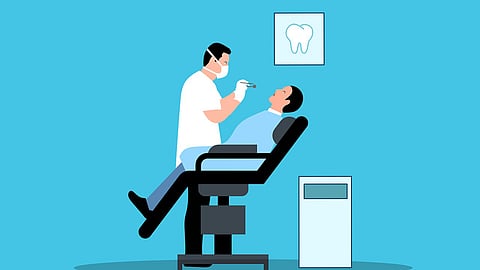In conclusion, fostering a safety-oriented workplace culture involves adhering to health guidelines, regularly maintaining and inspecting dental equipment, conducting risk assessments, using PPE, promoting open communication, and promptly reporting hazards. Continuous dental education programs and workshops are essential for raising awareness and providing education. By prioritizing safety, dental practices can enhance worker productivity and ensure high-quality patient care, creating a working environment free from harm and preventing occupational health injuries.
References
Anjum, Angabeen. (2019). HAZARDS IN DENTISTRY - A REVIEW. Pakistan Journal of Medicine and Dentistry. 10.36283/PJMD8-4/013.
Kumar M, Pai KM, Vineetha R. Occupation-related musculoskeletal disorders among dental professionals. Med Pharm Rep. 2020 Oct;93(4):405-409. doi: 10.15386/mpr-1581. Epub 2020 Oct 25. PMID: 33225267; PMCID: PMC7664727.
Rambabu T, Suneetha K. Prevalence of work related musculoskeletal disorders among physicians, surgeons and dentists: a comparative study. Ann Med Health Sci Res. 2014 Jul;4(4):578-82. doi: 10.4103/2141-9248.139327. PMID: 25221708; PMCID: PMC4160684.
Gopinadh A, Devi KNN, Chiramana S, Manne P, Sampath A, Babu MS. Ergonomics and Musculoskeletal Disorder: As an Occupational Hazard in Dentistry. The Journal of Contemporary Dental Practice [Internet]. 2013 [cited 2024 Mar 27]; 14(2):299–303. Available from: https://www.thejcdp.com/doi/10.5005/jp-journals-10024-1317.
Mahasneh AM, Alakhras M, Khabour OF, Al-Sa'di AG, Al-Mousa DS. Practices of Infection Control Among Dental Care Providers: A Cross Sectional Study. Clin Cosmet Investig Dent. 2020 Jul 14;12:281-289. doi: 10.2147/CCIDE.S261171. PMID: 32765112; PMCID: PMC7369297.
Hwang SY, Choi ES, Kim YS, Gim BE, Ha M, Kim HY. Health effects from exposure to dental diagnostic X-ray. Environ Health Toxicol. 2018 Dec;33(4):e2018017. doi: 10.5620/eht.e2018017. Epub 2018 Nov 21. PMID: 30661338; PMCID: PMC6341170.
https://www.cdc.gov/infectioncontrol/index.html
(By Dr. Nirainila Joseph)


